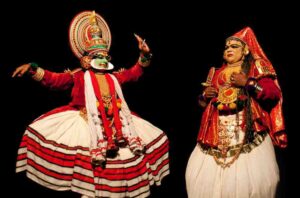Indian classical dance 2024
Indian classical dance
In Indian art and culture Indian classical dance is a dynamic art form that combines intricate rhythms, spirituality, and storytelling. It has its roots in India’s cultural legacy.
Every dance form, including Kathak, Odissi, Kuchipudi, Manipuri, Mohiniyattam, and Kathakali, has its own unique expressions, costumes, and movements. Dancers’ express emotions and stories through rhythmic footwork, facial expressions (abhinaya), and hand gestures (mudras), which are frequently drawn from religious texts and mythology.
These dances create a captivating fusion of visual and aural art that has been passed down through the generations. They are distinguished by their exact technique, intricate costumes, and strong connection to music.
Kathakali Indian classical dance In Indian art and culture
In the temples of Kerala, under the patronage of feudal lords, two forms of dance-drama, Ramanatam and Krishnatam, were developed, in which the story of Ramayana and Mahabharata was told, these folk drama traditions became the source of the emergence of Kathakali Indian classical dance,
the name is derived from Katha meaning story and Kali means drama. Koodiyattam (Sanskrit theatrical tradition) as well as other ancient martial arts exhibitions.

It is a wonderful combination of music, dance and drama. With the dissolution of the feudal system, Kathakali as a form of art began to emerge. It was revived in 1930 by the famous Malayalam poet V. N. Menon under the supervision of Mukunda Raja. Some of the characteristics of Kathakali Indian classical dance are written below:
Read More- Blog - Best Indian art and culture | Indradigi
Comments
Post a Comment